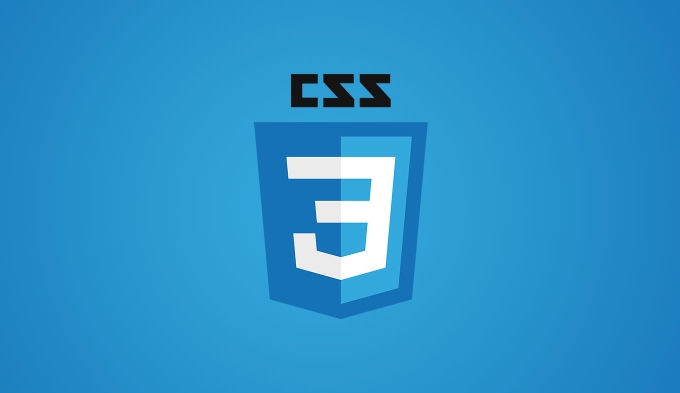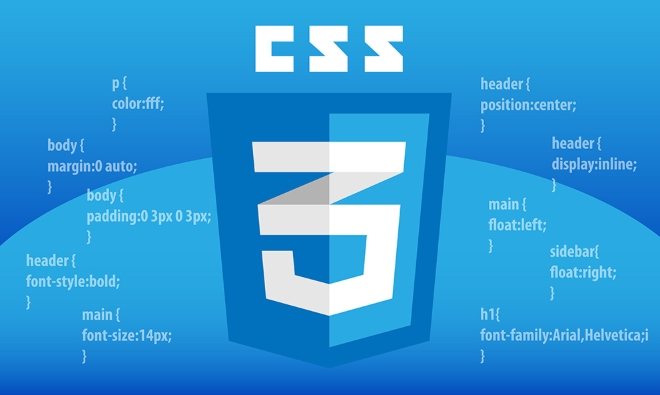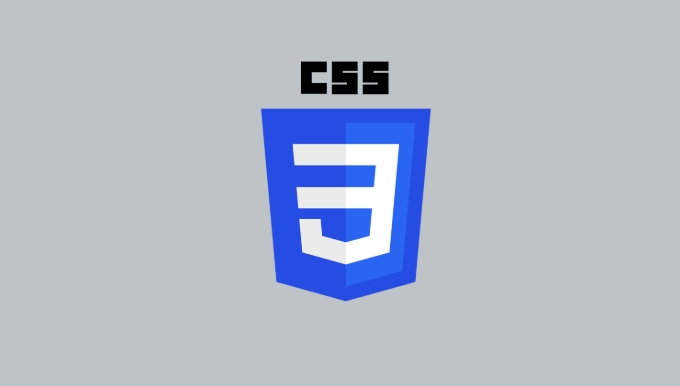CSS filters can achieve a variety of visual effects. 1. Use grayscale() to convert the picture into a grayscale diagram, which is often used for interactive state switching; 2. blur() realizes Gaussian blur, suitable for background blur and other scenarios; 3. Adjust the brightness, contrast and saturation through brightness(), contrast(), and saturate() respectively, and use it in combination to create a diverse tone; 4. Multiple filters can be used by superimposing spaces, but attention should be paid to the order and performance impact. These filters are simple and efficient, suitable for enhancing page expression.

CSS filters are a very practical tool that can directly realize some visual effects on web pages, such as blur, contrast adjustment, grayscale display, etc. They are not only simple and easy to use, but also have good compatibility, making them suitable for image processing or page special effects.

The following are the more commonly used effects and usages in actual development:

Gray or black and white style
Sometimes in order to unify the visual style, or highlight a certain state (such as a disabled state), the image needs to be turned into a gray tone. At this time, you can use grayscale() filter.
img {
filter: grayscale(100%);
}- The parameters are percentages,
100%means complete grayscale,0%means the original image. - This method is often used for mouse hover switching effects, such as:
img:hover {
filter: grayscale(0%);
}In this way, the picture is restored to color when the user moves it up, which has a sense of interaction, and there is no need to prepare two pictures.

Gaussian Blur
Blur effect is also a common requirement, such as pop-up background blur, picture preview blur, etc.
.blur-effect {
filter: blur(5px);
}- The parameter is the pixel value, and the larger the number, the blurry it becomes.
- Note: Too large blur will affect performance, especially when using dynamic blur for large images.
- A common approach is to use blur in transition animations, such as adding a point of blur before fading, to make the visual more natural.
Adjust brightness, contrast, saturation
These filters can be used alone or combined to adjust the overall tone of the image:
img {
filter: brightness(80%) contrast(120%) saturate(150%);
}-
brightness()controls brightness, 100% is the original brightness, less than 100% dimming. -
contrast()controls contrast, 100% is unchanged, the higher the value, the stronger the contrast. -
saturate()controls the color saturation, 100% is the original image, the higher the value, the brighter the color.
These parameters can be flexibly matched according to design needs, such as displaying a picture in "night mode" to appropriately reduce the brightness and contrast.
Multiple filters are superimposed
CSS allows you to write multiple filter functions in a filter property, just separate them with spaces:
.filter-combo {
filter: brightness(90%) sepia(30%) blur(2px);
}There is a need to pay attention to the order issue: Although order does not particularly significantly affect the final result in most cases, there may be interactions between certain filters. It is recommended to arrange it in logical order, such as color processing first and then blurring.
In addition, using multiple filters will increase the rendering burden, especially when used in large quantities of elements or animation effects, remember to test performance.
In general, CSS filters are a lightweight and effective visual enhancement method that can make good visual changes without relying on additional resources. Mastering a few commonly used functions and combining a little transition or interaction can improve the expressiveness of many pages.
The above is the detailed content of Using CSS filters for visual effects. For more information, please follow other related articles on the PHP Chinese website!

Hot AI Tools

Undress AI Tool
Undress images for free

Undresser.AI Undress
AI-powered app for creating realistic nude photos

AI Clothes Remover
Online AI tool for removing clothes from photos.

Clothoff.io
AI clothes remover

Video Face Swap
Swap faces in any video effortlessly with our completely free AI face swap tool!

Hot Article

Hot Tools

Notepad++7.3.1
Easy-to-use and free code editor

SublimeText3 Chinese version
Chinese version, very easy to use

Zend Studio 13.0.1
Powerful PHP integrated development environment

Dreamweaver CS6
Visual web development tools

SublimeText3 Mac version
God-level code editing software (SublimeText3)

Hot Topics
 What is 'render-blocking CSS'?
Jun 24, 2025 am 12:42 AM
What is 'render-blocking CSS'?
Jun 24, 2025 am 12:42 AM
CSS blocks page rendering because browsers view inline and external CSS as key resources by default, especially with imported stylesheets, header large amounts of inline CSS, and unoptimized media query styles. 1. Extract critical CSS and embed it into HTML; 2. Delay loading non-critical CSS through JavaScript; 3. Use media attributes to optimize loading such as print styles; 4. Compress and merge CSS to reduce requests. It is recommended to use tools to extract key CSS, combine rel="preload" asynchronous loading, and use media delayed loading reasonably to avoid excessive splitting and complex script control.
 How to use Lotties in Figma
Jun 14, 2025 am 10:17 AM
How to use Lotties in Figma
Jun 14, 2025 am 10:17 AM
In the following tutorial, I will show you how to create Lottie animations in Figma. We'll use two colorful designs to exmplify how you can animate in Figma, and then I'll show you how to go from Figma to Lottie animations. All you need is a free Fig
 Breaking Boundaries: Building a Tangram Puzzle With (S)CSS
Jun 13, 2025 am 11:33 AM
Breaking Boundaries: Building a Tangram Puzzle With (S)CSS
Jun 13, 2025 am 11:33 AM
We put it to the test and it turns out Sass can replace JavaScript, at least when it comes to low-level logic and puzzle behavior. With nothing but maps, mixins, functions, and a whole lot of math, we managed to bring our Tangram puzzle to life, no J
 External vs. Internal CSS: What's the Best Approach?
Jun 20, 2025 am 12:45 AM
External vs. Internal CSS: What's the Best Approach?
Jun 20, 2025 am 12:45 AM
ThebestapproachforCSSdependsontheproject'sspecificneeds.Forlargerprojects,externalCSSisbetterduetomaintainabilityandreusability;forsmallerprojectsorsingle-pageapplications,internalCSSmightbemoresuitable.It'scrucialtobalanceprojectsize,performanceneed
 Does my CSS must be on lower case?
Jun 19, 2025 am 12:29 AM
Does my CSS must be on lower case?
Jun 19, 2025 am 12:29 AM
No,CSSdoesnothavetobeinlowercase.However,usinglowercaseisrecommendedfor:1)Consistencyandreadability,2)Avoidingerrorsinrelatedtechnologies,3)Potentialperformancebenefits,and4)Improvedcollaborationwithinteams.
 CSS Case Sensitivity: Understanding What Matters
Jun 20, 2025 am 12:09 AM
CSS Case Sensitivity: Understanding What Matters
Jun 20, 2025 am 12:09 AM
CSSismostlycase-insensitive,butURLsandfontfamilynamesarecase-sensitive.1)Propertiesandvalueslikecolor:red;arenotcase-sensitive.2)URLsmustmatchtheserver'scase,e.g.,/images/Logo.png.3)Fontfamilynameslike'OpenSans'mustbeexact.
 CSS Counters: A Step-by-Step Tutorial with Examples
Jun 12, 2025 am 10:31 AM
CSS Counters: A Step-by-Step Tutorial with Examples
Jun 12, 2025 am 10:31 AM
CSSCounters is a tool for creating automatic numbers. 1. Basic usage: define and operate counters through counter-reset and counter-increment, such as "SectionX." before h2. 2. Advanced usage: Use nested counters to create complex numbers, such as chapter and section numbers. 3. Notes: Ensure the counter is reset correctly, optimize performance, and simplify counter logic. 4. Best practice: clear naming, define counters in CSS, and use counter-increment and counter-reset reasonably.
 What is Autoprefixer and how does it work?
Jul 02, 2025 am 01:15 AM
What is Autoprefixer and how does it work?
Jul 02, 2025 am 01:15 AM
Autoprefixer is a tool that automatically adds vendor prefixes to CSS attributes based on the target browser scope. 1. It solves the problem of manually maintaining prefixes with errors; 2. Work through the PostCSS plug-in form, parse CSS, analyze attributes that need to be prefixed, and generate code according to configuration; 3. The usage steps include installing plug-ins, setting browserslist, and enabling them in the build process; 4. Notes include not manually adding prefixes, keeping configuration updates, prefixes not all attributes, and it is recommended to use them with the preprocessor.






